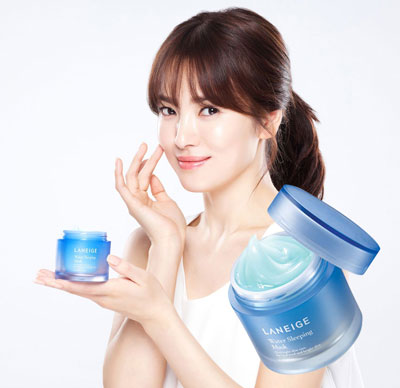Beauty Comparison Series 2
Many times, French luxury brands are market leader of a certain product family. So, most of times Korean brands copy & improve the concept of French or US products but nowadays, we can easily see the copy & improve the other way around. So, as a second series, I have brought some Korean products that were inspiration of other luxury brands, so I think it will be an interesting series to read.


1. IOPE cushion & Yves Saint Laurent Cushion Encre de Peau
IOPE is the first company who invented the “Cushion Foundation” category (there were only two types of foundation before IOPE Air Cushion, liquid & pressed powder type compact foundation). The Cushion sounds complicated but the logic behind of this category is relatively simple. Since the foundation particles were nicely dispersed in the fabricated sponge, foundation can be applied thin and evenly without much effort nor maestro brush skill.
So, this invention of IOPE quickly become the absolute best seller of Amore Pacific, and recorded as the most sold Korea makeup product of all time. In 2016, they recorded 30 million sales worldwide. It was originally introduced only basic Air Cushion, but now there are 4 different kinds of subcategory, differs in finish texture and coverage - Intense Cover, Moisture Lasting, Matt Long Wear, Natural. Yves Saint Laurent introduced Cushion Encre de Peau in March 2016. With natural color, more shade and beautifully designed package (I mean who would hate YSL in your compact, right?) it quickly become a popular cushion in Korea. Because of the wider range of shade, darker or paler skin toned people can use this cushion as well.
In United States, however, Encre de Peau is a little hard to buy. So if you want to try out Yves Saint Laurent, try Touch Eclat Cushion. IOPE Air Cushion and YSL Encre de Peau Cushion are not that different from each other in terms of ingredients, but IOPE has better UV coverage. Unlike many other color products from non-Korean brands, YSL’s ingredients are very similar to Korean cosmetics. (Maybe this is why Encre de Peau is popular in Korea.)


2. Laneige Water Sleeping Mask & Dior Hydra Life Jelly Sleeping Mask
Before Lanegie’s Water Sleeping Mask, we did not have any water based, jelly type sleeping mask at all. Night Creams did existed before Lanegie’s Water Sleeping Mask, but generally they are like “Nourishing type” of mask that contains lots of oil based moisturizers.
Before Dior’s Hydra Life, Origins also introduced Drink-Up Overnight Mask, but it was more like high oil overnight cream rather than watery & moisturizing jelly. Lanegie’s Water Sleeping Mask was first introduced as Water Sleeping Pack in 2001, and after 3 ingredient update, Laneige changed the cream's title as Water Sleeping Mask. It instantly became the most selling product in Laneige, and until 2016, it was sold more than 6 million jars worldwide.
Laneige's Water Sleeping Mask contains trehalose, hyaluronic acid and beta-glucan as moisturizing ingredient and contains stabilized vitamin C derivative, ascorbyl glucoside. Evening Primrose extract and apricot extract are added as detoxifying ingredients. There were some minor ingredient changes over past 15 years to minimize harsh ingredient, but texture didn’t change much.
On the other hand, Dior also introduced water based jelly type sleeping mask in 2015. (I am not sure exact date but it is definitely much after Lanegie.) It is also moisturizing jelly type and also use sodium hyaluronate and betaine as moisturizing ingredients. Interestingly, they added centella asiatica leaf extract. In general, the ingredients are quite disappointing. They used BHT as preservative along with phenoxyethanol, seemingly for the longer shelf life and benzyl alcohol for solvent/preservative as well. I don’t really understand why they put so much preservatives, and especially BHT is rarely used in Korean cosmetic because of its known toxicity and allergies and its carcinogenicity in animal studies.










